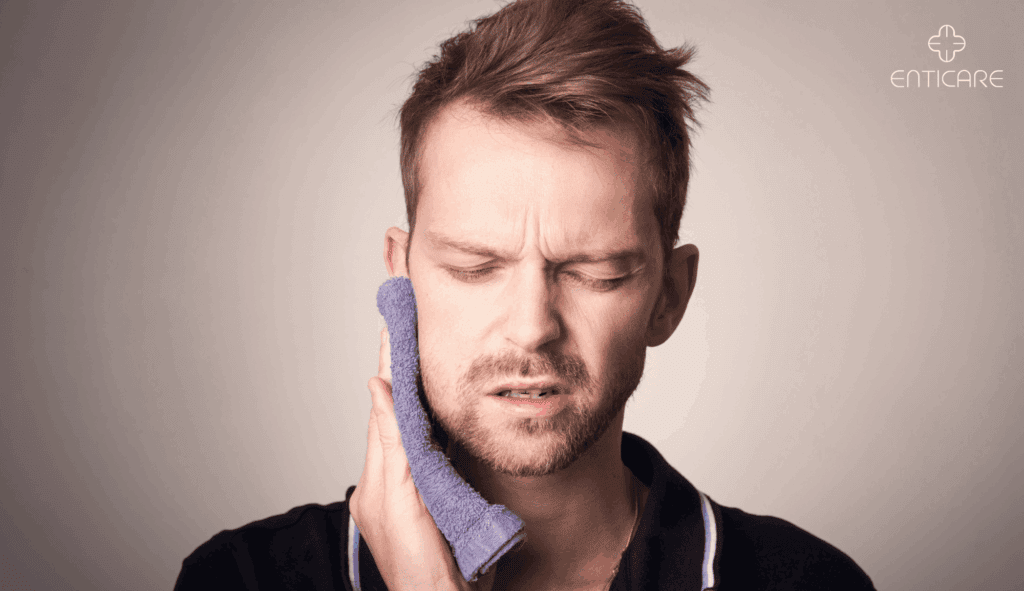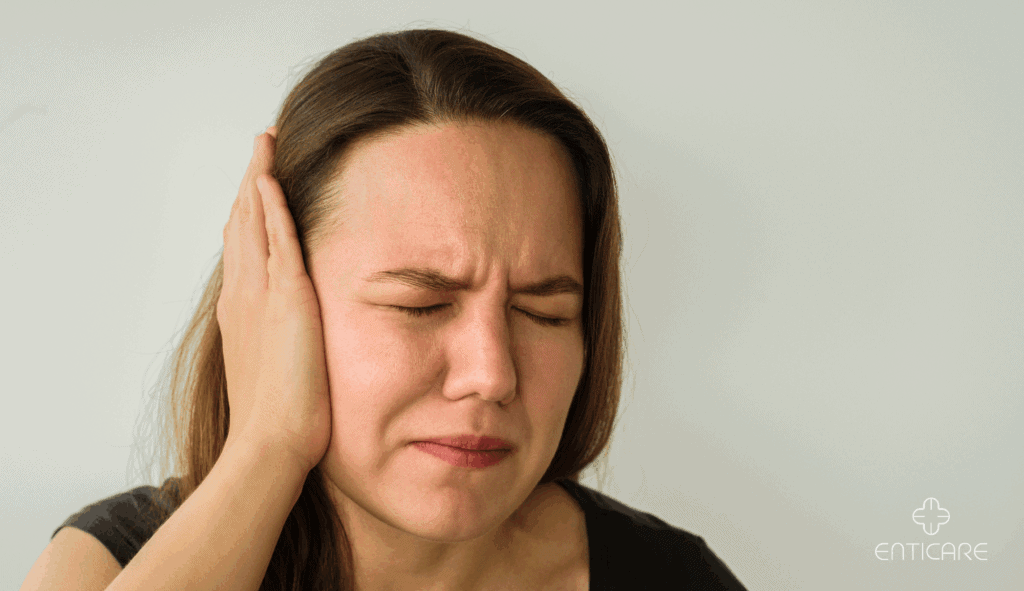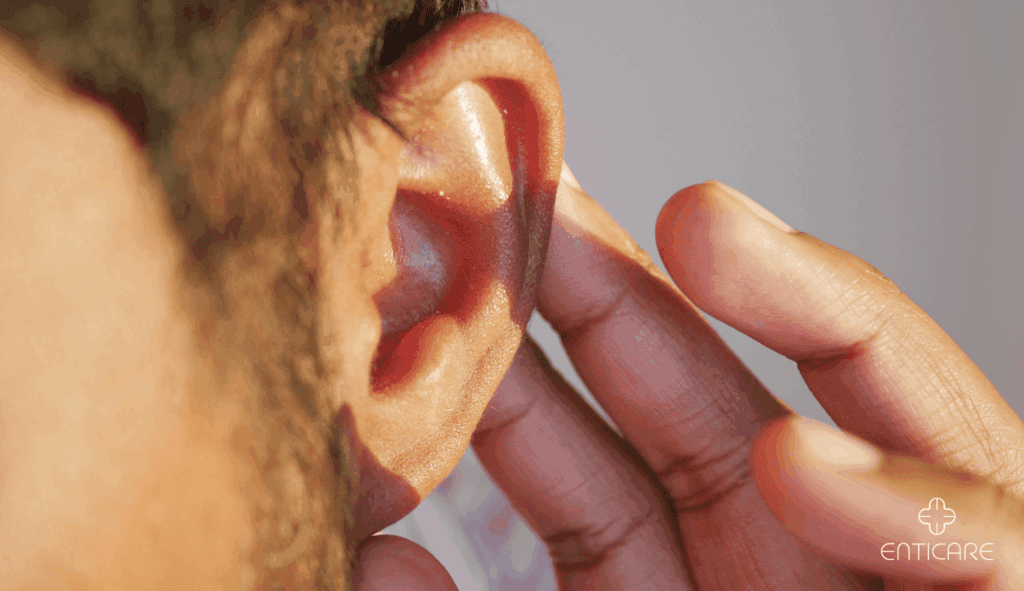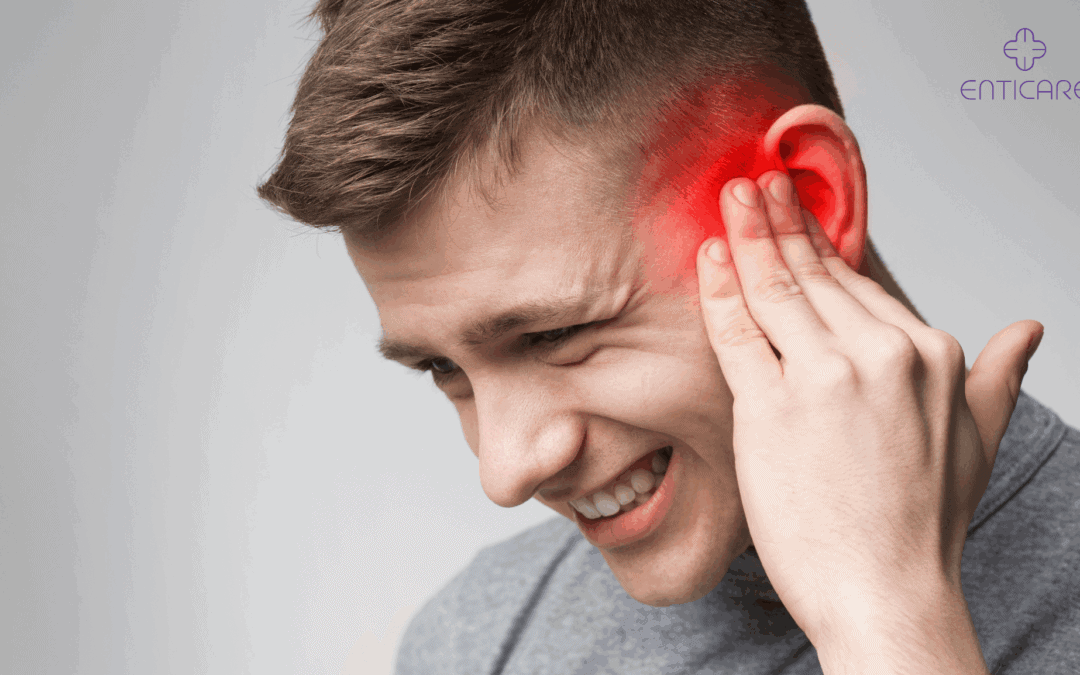The ear is an essential organ for hearing and balance, but its delicate structure makes it vulnerable to ear injuries and trauma. From sudden impacts to loud sounds, ear injuries can disrupt hearing and cause lasting effects. Here, we’ll explore types of ear trauma, treatment options, and essential tips for prevention.

Understanding Ear Trauma: Types and Causes
Ear trauma covers a range of injuries, from minor irritation to severe, life-changing damage. Understanding the types of ear trauma helps to identify the best ways to manage and treat it.
Head trauma can also lead to significant ear injuries, particularly when the temporal bone is affected.
Blunt Force Trauma
- Direct Impact: Direct hits to the ear, like a slap or punch, can cause outer ear injury and damage delicate inner structures, leading to pain, bleeding, or even eardrum rupture.
- Sports and Physical Activities: Activities like boxing, football, or water sports increase the risk of blunt force trauma to the ear.
- Accidental Falls: Falls can lead to head and ear injuries, especially in elderly or young children who may have difficulty balancing.
Acoustic Trauma
- Loud Noises: Exposure to extremely loud sounds, like fireworks or gunshots, can damage inner ear cells, resulting in hearing loss or tinnitus (ringing in the ears).
- Workplace Noise: Regular exposure to loud machinery or tools in certain workplaces can gradually harm hearing.
- Explosive Sounds: Explosions and blasts generate sound waves that travel through the ear canal, damaging the delicate structures inside.
Barotrauma
- Air Pressure Changes: Rapid changes in altitude, such as during flights, can cause pressure imbalances that lead to pain and temporary hearing loss.
- Diving and Water Activities: Scuba diving and even swimming can lead to ear barotrauma if proper pressure equalization doesn’t occur.
- Clogged Sinuses: Nasal congestion from allergies or colds can exacerbate pressure-related issues, making ears more vulnerable to barotrauma.

Recognizing Symptoms of Ear Trauma
Recognizing the signs of ear trauma helps in seeking timely treatment. While some symptoms appear immediately, others may develop over time.
Pain and Discomfort
- Sharp or Persistent Pain: Sharp pain from sudden trauma or lingering pain from pressure changes usually points to physical damage in the ear.
- Temporal bone fracture: A fracture in the temporal bone due to head trauma can cause sharp, persistent pain and may lead to complications like hearing loss or facial paralysis.
- Fullness or Pressure: Many experience a sense of fullness after ear trauma, indicating swelling or fluid accumulation.
- Head injury: Following a head injury, symptoms like fullness or pressure in the ear may indicate serious conditions such as fractures or fluid leaks.
- Sensitivity to Touch: Affected ears may feel tender to the touch, especially in cases of direct impact trauma.
Tinnitus and Balance Issues
- Ringing or Buzzing: Persistent ringing, known as tinnitus, can result from acoustic trauma, often linked with noise exposure.
- Vertigo or Dizziness: The inner ear houses balance structures, so trauma here can trigger dizziness or balance issues.
- Loss of Equilibrium: Some experience difficulty walking or standing steadily, especially after barotrauma or acoustic trauma.

Treatment Options for Ear Trauma
Treating ear trauma depends on the injury’s severity and underlying cause. Timely and proper treatment is essential to protect and preserve hearing.
Medical Evaluation and Imaging
- ENT Consultations: Ear, Nose, and Throat (ENT) specialists assess trauma symptoms, examine ear structures, and provide personalized recommendations.
- Imaging Tests: Doctors may order CT scans or MRIs to check for internal ear injuries and potential damage to surrounding structures.
- Middle ear: Imaging tests like CT scans or MRIs can help identify injuries to the middle ear, including damage to the ossicles and tympanic membrane.
- Audiometric Tests: Hearing tests can measure hearing loss levels and help determine if interventions like hearing aids might be necessary.
- Middle ear bones: Audiometric tests can reveal issues with the middle ear bones, such as ossicular dislocation, which may require surgical intervention or hearing aids.
Medication and Pain Management
- Anti-Inflammatories: Pain and inflammation after blunt force trauma may be managed with anti-inflammatory medications.
- Antibiotics for Infection: Antibiotics help when ear trauma leads to infections, common in cases where fluid or blood accumulates in the ear.
- Ear Drops and Decongestants: For barotrauma or fluid buildup, ear drops or decongestants may relieve pressure and improve ear function.
Surgical Interventions
- Eardrum Repair (Myringoplasty): Surgeons repair a torn eardrum using a small graft, often necessary after severe impact or punctures.
- Inner Ear Procedures: In cases of acoustic trauma or chronic infections, advanced procedures target inner ear structures to restore or protect hearing.
- Hearing Aids or Implants: For those with permanent hearing loss, hearing aids or cochlear implants can offer significant hearing improvement.
Get Help for Ear Trauma Today
If you’ve experienced ear trauma, expert care can make a difference. Schedule an appointment with Enticare’s hearing specialists to discuss your symptoms and find the best treatment options. Book your appointment today and protect your hearing health for the future!

